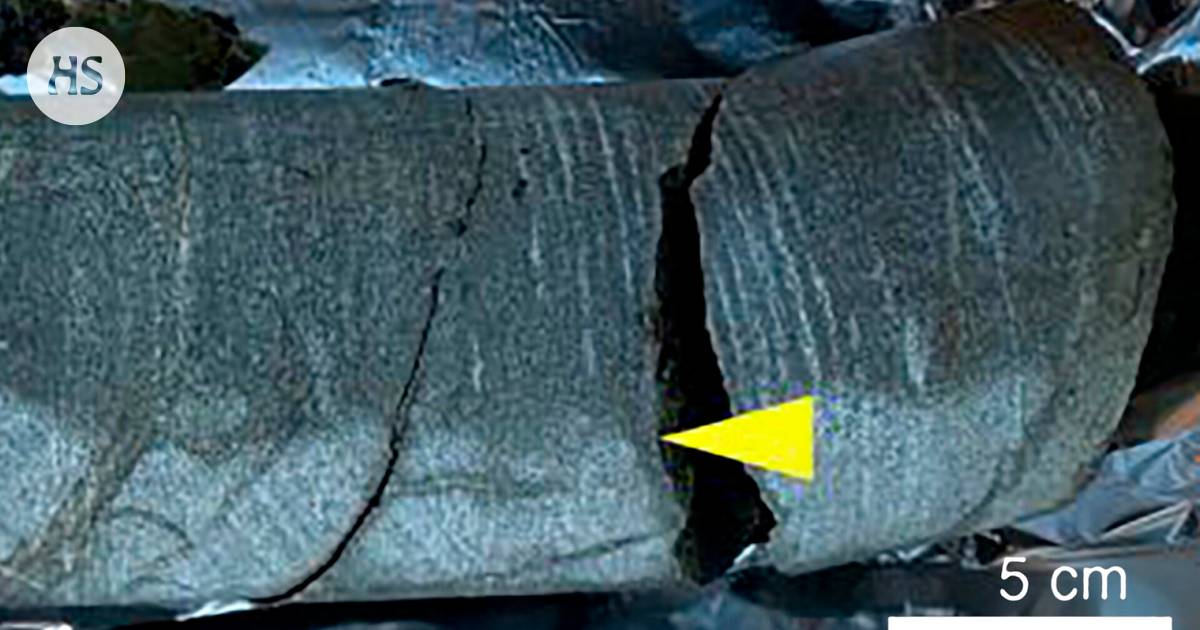The origin of life|If the microbes are as old as the surrounding rock, they are the oldest living microbes on Earth.
The summary is made by artificial intelligence and checked by a human.
A community of living microbes was found in rock samples two billion years old.
Geomicrobiologist Yohey Suzuki and his team drilled rocks from a depth of 15 meters in South Africa’s large area of igneous rocks.
The researchers used different techniques of sterilization to ensure that the microbes were not contaminated.
The discovery may help to understand the evolution of microbes. The rocks may even have points of contact with rock samples drilled from the planet Mars.
Maan a community of living microbes has been found in an old rock sample taken from Uumen.
The rocks are about two billion years old. No signs of life have been found in stones this old before.
“This is exciting,” says the geomicrobiologist Yohey Suzuki from the University of Tokyo.
Microbes tend to develop more slowly than usual if they are in isolated underground pockets. You see, they do not face selection pressure in their environment.
Microbes include bacteria and archaeons and also molds, yeasts, green algae and some protozoa.
Suzuki drilled with groups of rocks from a depth of 15 meters. The drilled rock was igneous rock, the origin of which is much deeper in the earth’s crust.
Magma is formed deep in the lower parts of the earth’s crust or in the mantle below the crust.
The Japanese drilled a rock sample from a igneous rock formation that is close to the surface of the earth. The area is known as the Bushveld Igneous Complex. It is located in the northeastern parts of South Africa, north and northeast of Johannesburg. The area is 66,000 square kilometers in size.
With his group, Suzuki used the International Scientific of the ICDP of the drilling program equipment and help. A rock sample about 30 centimeters long was found on the surface of the earth, he says website Science Alert.
Researchers first had to ensure that the microbes were not contaminated when they were extracted. In extraction, the desired substance can be separated from the solution based on the solubility properties of the substance.
The Japanese used a technique where the outside of the sample is sterilized before it is sliced and the sample is examined. Sterilization destroyed impurities.
Suzuki then stained the slices cut from the sample with cyan, or blue-green. The cyan used here bound to the sample’s DNA.
If and when there is DNA in the sample, it will appear blue-green when the sample is illuminated with an infrared spectroscope. A spectroscope is a device that splits light into different wavelengths. The color was visible.
Enlarged extract of the drilling. The microbes appeared green (right) when the researchers stained the liquid with cyan.
A sample there was a lot of clay in the plot. It was packed into pockets of rock near microbial colonies.
The clay may have provided the microbes with substances they could rely on to survive. The clay also sealed the stone so that microbes could not get elsewhere. Correspondingly, nothing got into the stone pockets.
Microbes in rocks are now being studied closely. DNA must be studied to see if it has changed and been separated from other life over the course of millions of years.
The Japanese are now looking for more samples nearby. They help place the discovered microbes in their correct place in Earth’s evolutionary history.
Also similar microbes may be found elsewhere on Earth – or even on other planets like Mars.
After all, the rocks in the area are very similar to some of the rocks found on Mars and also about the same age, says Suzuki, according to New Scientist.
Mars rover Perseverance is on Mars during its orbit drilled sampleswhich are the same age as the rocks in which the microbes were now found.
Rock samples on Mars are already sealed waiting for the pick-up.
The US space agency Nasa is looking for funding for a small rocket that would bring the samples to Earth for research. This will happen in the 2030s at the latest.
Told about the microbe discovery scientific journal Microbial Ecology.
